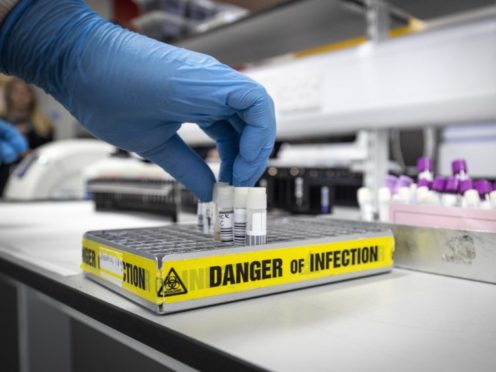
The first case of coronavirus has been recorded in Scotland, the Scottish Government has announced.
A patient from Tayside has been diagnosed with covid-19 having recently returned from Italy.
They have been admitted to hospital and will receive treatment in isolation while medical staff trace where the patient has been and who they’ve come into contact with.
In response, First Minister Nicola Sturgeon has chaired a meeting of the Scottish Government’s Resilience Committee (SGoRR).
Ms Sturgeon will also be a part of the UK wide resilience (COBR) meeting chaired by Boris Johnson on Monday morning.
A patient has been diagnosed with coronavirus (COVID-19) in Scotland: https://t.co/QF15XT1HcF pic.twitter.com/5xrOBNaoXa
— Scottish Government (@scotgov) March 1, 2020
In a statement, she said: “Our first thoughts must be with the patient diagnosed with coronavirus, I wish them a speedy recovery.
“Scotland is well-prepared for a significant outbreak of coronavirus but there is currently no treatment or vaccine. Early detection measures will continue to be vital in helping to prevent the spread of the virus.
“People have a vital role to play in helping us contain any outbreak by following the latest health and travel advice, and following basic hygiene precautions, such as washing hands frequently, not touching their face and covering their nose and mouth with a tissue when coughing or sneezing.”
Scotland’s chief medical officer Dr Catherine Calderwood added: “Firstly our thoughts are with the person who has been diagnosed, and with their family. I would like to thank all the health professionals who continue to be involved in their care and treatment.
“Scotland is well equipped to deal with infections of this kind. We have a proven track record of dealing with challenging health issues, and have been preparing for this possibility since the beginning of the outbreak in Wuhan.
“This is peak season for respiratory and flu-like illness. There will be people presenting with symptoms of acute respiratory illness but these cases are highly unlikely to be coronavirus (COVID-19).
“We practice and prepare our response to disease outbreaks and follow tried and tested procedures, following the highest safety standards possible for the protection of NHS staff, patients and the public.”
Almost 700 people have been tested for coronavirus in Scotland, and this case is the first to test positive.
In total 698 tests had been carried out by Sunday, up from 630 on Saturday.
12 new patients have been identified in England, bringing the UK total to 36.
The Scottish Government has said it is well-prepared to deal with a potential outbreak.
Health officials are to begin testing some people with flu-like symptoms for the virus even if they have not visited affected areas.
The country’s leading expert on infection control warned that if coronavirus “got really rolling” then scheduled operations would be threatened with a huge strain being placed on other NHS services.
Professor Hugh Pennington said an outbreak in Scotland would mean an urgent need for more testing facilities.
He added: “A bigger problem and a much more difficult one to cope with is how the health service would respond because a significant minority of patients with coronavirus would have a serious illness that would require intensive care.
“Most would survive if they’re treated with proper intensive care, but they’d be in hospital for two weeks with severe pneumonia and needing respiratory support.”
Professor Pennington, emeritus professor of bacteriology at Aberdeen University, added: “Intensive care units are stretched anyway. They don’t run on having a slack in the system by plan. They may have a slack because some patients have suddenly got better or died. But you can’t plan on that.
“It’s not economically effective to have 20% of your beds empty all the time. But, on the other hand, you do need that kind of slack for this kind of situation if it took off.
“People won’t stop having road traffic accidents or heart attacks or strokes. They will still require the treatment they’re having now.
“You can’t suddenly build an intensive care unit overnight. It would be very, very difficult. You’d have to put some of the non-infected patients somewhere else if it came to that.
“A lot will depend on the quality of the managers as well as getting the resources and the facilities and spending vast sums of money and giving up on waiting-list times and targets. They would go out the window. They would stop doing elective surgery.
“If the virus took off and started infecting the elderly, as one would reasonably predict it would, then hip replacements would stop for a while because you’d need the anaesthetists in intensive care.”

Enjoy the convenience of having The Sunday Post delivered as a digital ePaper straight to your smartphone, tablet or computer.
Subscribe for only £5.49 a month and enjoy all the benefits of the printed paper as a digital replica.
Subscribe